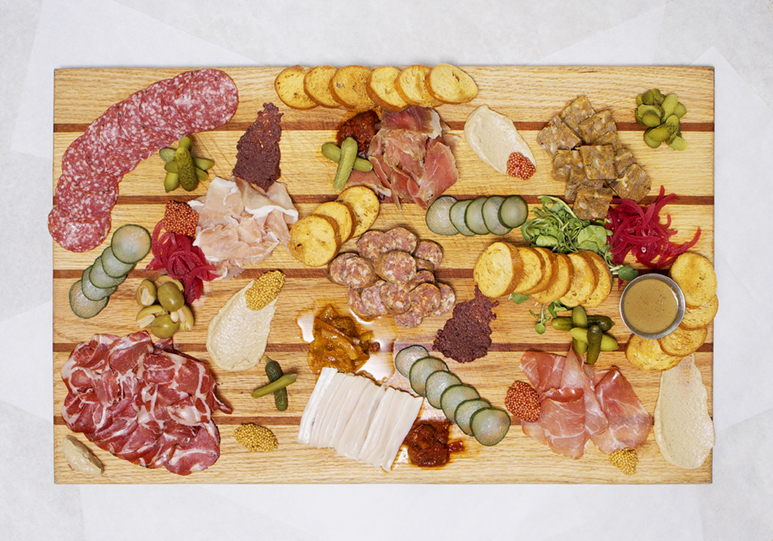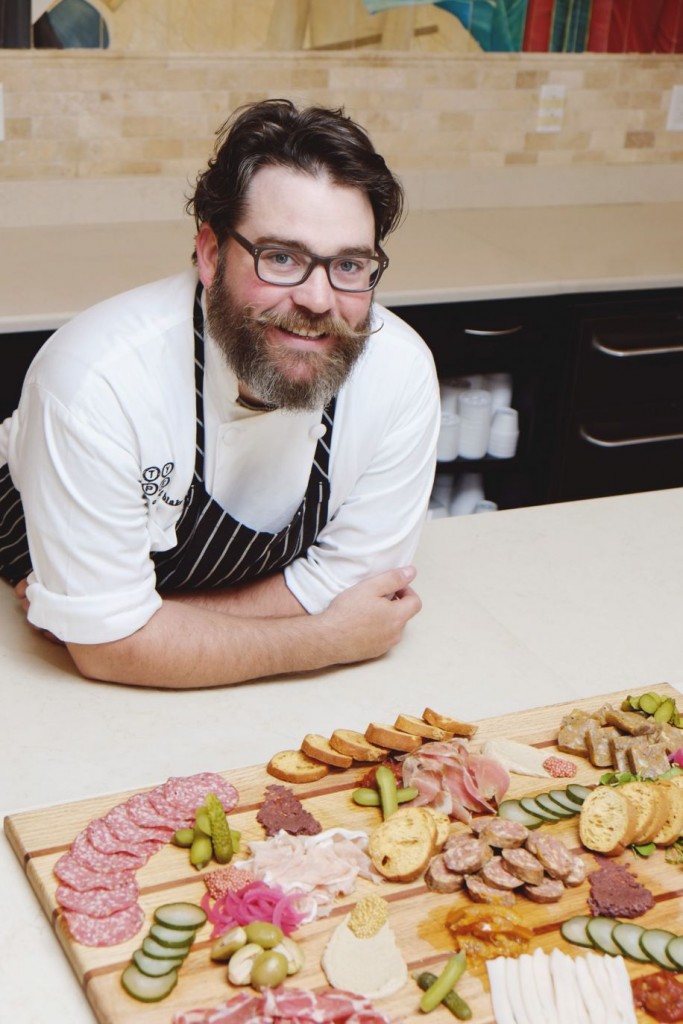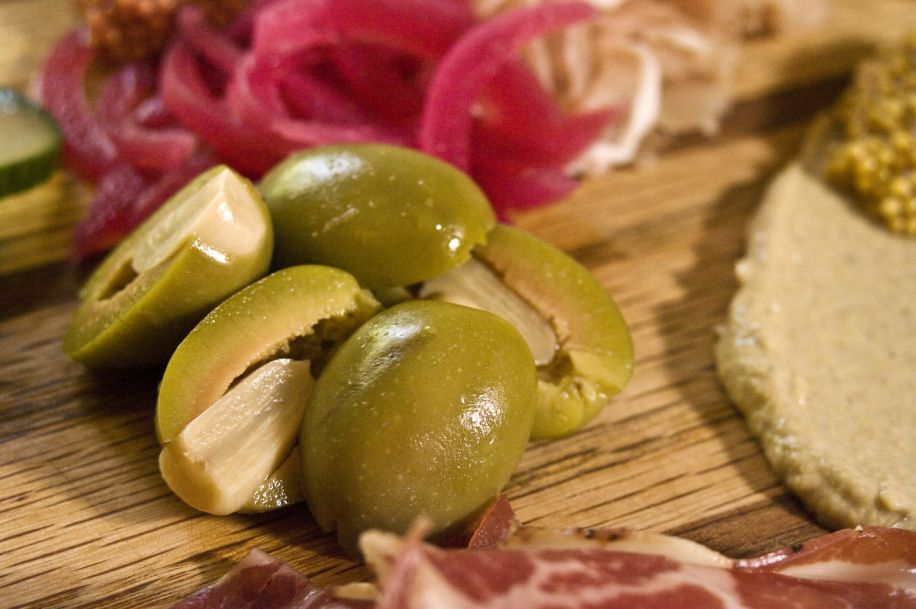By Blake Rushing, chef
Charcuterie (shahr-koo-tuh-ree) is a beautiful thing. It is one of the most primal ways of preserving proteins that would rot without curing in salt or preserving in fat. Charcuterie translates into “cooked flesh.” The cooking can be done with heat, smoke, or salt. Some delicious examples are rillettes, pates, confits, cured meats, sausages, ballontines, galantines, etc. The curing process is an art in itself and develops a depth of incredible flavors, much like a fine wine. The art or artisan side of the curing process comes from the salt to sugar ratio and the addition of spices. Also, how long you keep the protein in the cure and how long you hang the protein will control the flavor and texture. At Type by Chef Blake Rushing, we are well known for all of our house-made charcuterie, the most popular being our signature bacon, smoked Scottish salmon, and chicken liver mousse. When Union Public House opens in the fall, we plan to have a very extensive charcuterie program and all the curing meats will be on display over the bar.
Prosciutto, cappicola, bresola, lonza, and bacon are all words you may have probably heard before and even enjoyed some of them. These types of charcuterie are literally nice chunks of meat that are cured for anywhere from one day to three weeks. The whole hindquarter of a pig can be cured and sometimes smoked and has different names depending on where in the world you are. For example, prosciutto is French, iberico is Spanish, country ham is smoked and American, speck is smoked and Irish, serrano is Italian, and they all have different styles and flavors that make them unique to the region. Cappicola is cured neck/shoulder. Bresola is cured beef. Lonza is cured pork loin. All of these start out with a mixture of two parts salt to one part sugar and the addition of a small amount of nitrate “pink” salt. Then you can customize the cure with spices to your taste. The bigger the chunk of meat the longer it cures and the longer it will have to hang and air dry. We have a Duroc heritage American pig ham that has been air drying for 17 months after a three week cure. The kitchen is excited to cut into it next month when it will be ready after the 18 month process.
The next style is forcemeats, which we can make into sausages and salamis. Forcemeat is ground protein with the addition of spices and other flavorings that are packed into natural casings made from natural intestines. Andouille, cotecchino, chorizo, blood sausage: the list goes on and on and they have tons of variations. Sausages can be cooked fresh, cured and aged, smoked, and/or boiled.
My favorite section of the kitchen is the garde manger or “keeper of food.” This is basically the cold starter section of the kitchen. In culinary school at Le Cordon Bleu in Orlando, this was by far my favorite class. A nice terrine takes between 48 and 72 hours. Terrine is merely the shape and mold you pack the protein into for cooking or chilling. Pate is ground into forcemeat and then packed into a terrine mold. There are two main ways to make a terrine. The first is to prep and marinate the protein, then you must let the flavors marry over night to develop flavor, and finally gently cook in a water bath and let chill over night. The second is to cook your ingredients before layering them into the terrine. Cooking before could be by braising in stock and reducing that stock down to where the natural collagen from the bones set the liquid to hold the terrine together or by confiting in duck fat which, once chilled, will solidify to hold the terrine together. The next morning it’s like a Christmas present wrapped up ready for you to open.
When I worked at the Savoy Grill in London, I was on garde manger for the first year of my career. We had a wild game pate, a hare terrine, a ten layered seared foie gras, smoked goose and confit duck terrine, and a seafood and vegetable terrine. The cool thing about terrines is your imagination can run wild and there are unlimited creations.
If you are not up for curing your own, there are lots of spots in town to buy it yourself. When Union Public House opens, we will be selling it by the pound. Joe Patti has a great selection and Type will do custom orders for you with 48-hour notice. This is how you impress your friends at a party. Use the knowledge you learned here and make an impressive platter. Grab a selection of pickles, four or five sliced cured meats, sausages and pates, a couple of mustards and some crackers or toasts and let your inner artist come out. I always start with the meats and then build up everything else. There is nothing better then a big meat platter to pick at while hanging out with your friend, and crazy enough it pairs up splendidly with almost any beer or wine. Enjoy, aspiring artisans!

